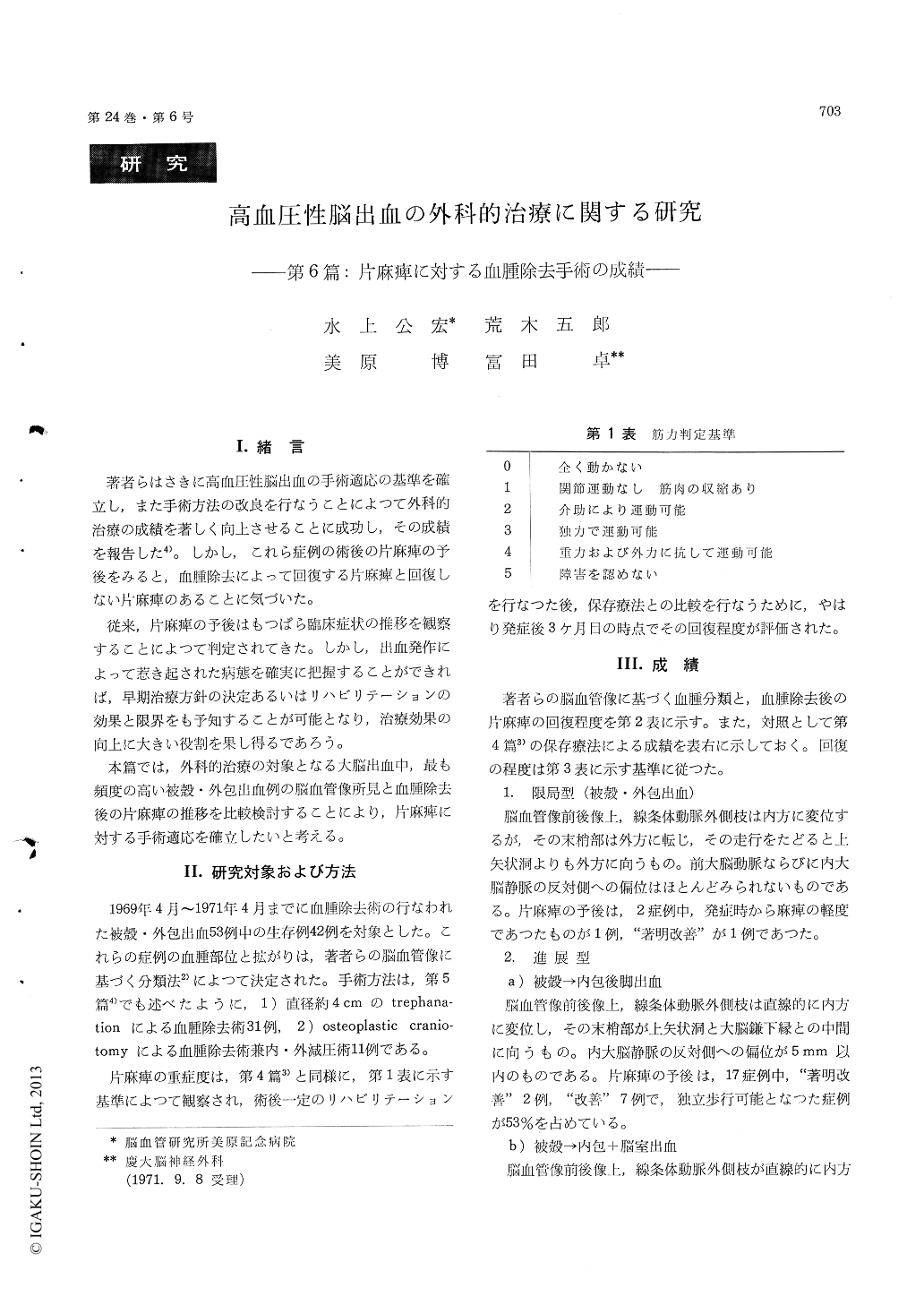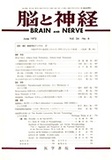Japanese
English
- 有料閲覧
- Abstract 文献概要
- 1ページ目 Look Inside
I.緒言
著者らはさきに高血圧性脳出血の手術適応の基準を確立し,また手術方法の改良を行なうことによつて外科的治療の成績を著しく向上させることに成功し,その成績を報告した4)。しかし,これら症例の術後の片麻痺の予後をみると,血腫除去によって回復する片麻痺と回復しない片麻痺のあることに気づいた。
従来,片麻痺の予後はもつぱら臨床症状の推移を観察することによつて判定されてきた。しかし,出血発作によって惹き起された病態を確実に把握することができれば,早期治療方針の決定あるいはリハビリテーションの効果と限界をも予知することが可能となり,治療効果の向上に大きい役割を果し得るであろう。
We have operated 53 cases of putaminal hemor-rhage which is the predilection site in hypertensive intracerebral hemorrhage and correlated the pro-gnosis for hemiplegia with our angiographic classi-fication of hematoma.
1. The recovery of hemiplegia was almost com-plete in case with hematoma localized in the puta-men (external capsule) by both surgical evacuation and medical treatment.
2. The recovery of hemiplegia could not be ex-pected in cases with hematoma extended into lateral ventricle destructing the internal capsule, The major aim of surgery is lifesaving in these cases.
3. The prognosis for hemiplegia by the surgical evacuation was significantly better than that of conservative management in cases with the hema-toma spread into a part of the posterior limb of internal capsule. Surgery is advisable for this type of hemorrhage.
4. The severity and prognosis of hemiplegia in putaminal hemorrhage is primary determined by the presence or absence and the degree of the destruction of the posterior limb of internal capsule. This can be estimated to evaluate the configuration and displacement of the lateral lenticulostriate artery. This fact was clarified comparing the an-giography with the autopsy finding.

Copyright © 1972, Igaku-Shoin Ltd. All rights reserved.


